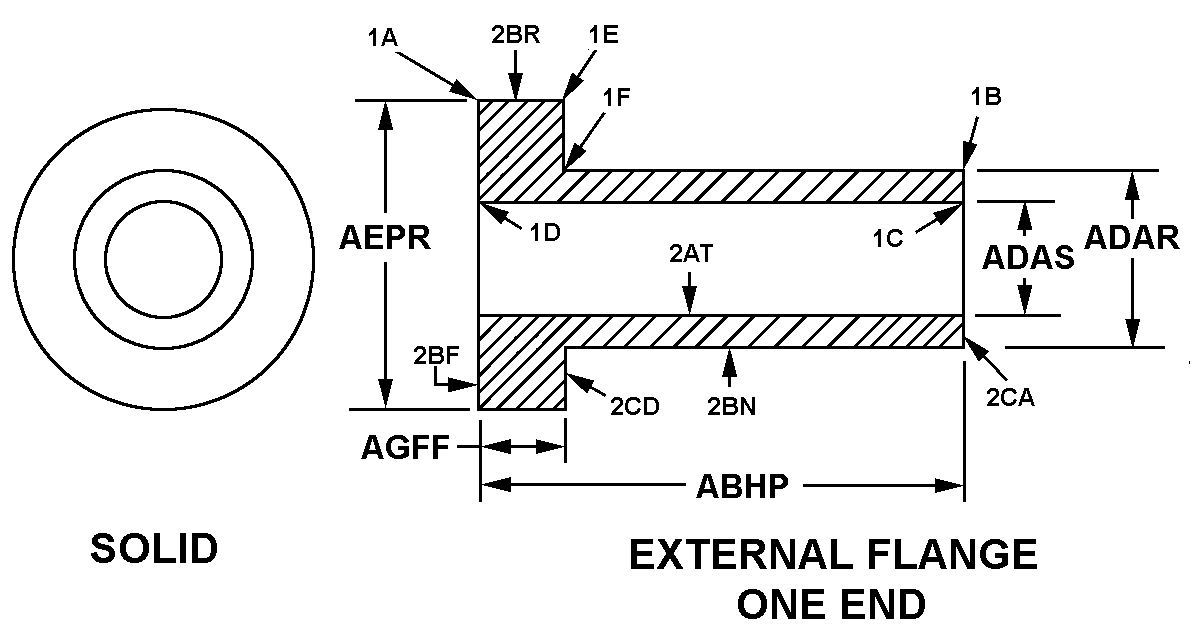5365012692649
Price Quote Get an up to date pricing and availability quote for this product. Order online or over the phone.
Quality Commitment
Serving our customers with quality and safety first.
- AS9120 Certified
- Audited supply chain
- ITAR Registered
- DDTC Registered
- HAZMAT Certified
- Customer service objectives
- Every product 100% inspected

5365-01-269-2649 Specification Set by the OEM (see RNCC code 3)
0.9650in. ⁓31/32"
0.4700in.
0.3730in. and 0.3770in.
0.5950in.
0.0600in.
0.2500in. and 0.2520in.
0.0620in.
square all corners
96 dp straight knurl 0.2500 in. wide
steel comp 316 or steel comp 303
QQ-S-763, cond a fed spec 1st material response or astm A582, cond a assn std 2nd material response
passivate
QQ-P-416, type 1, 2, 3 or 4 fed spec single treatment response
solid, external flange one end, internal flange one end
Cross Reference Parts Part numbers that meet the specification outlined on this page and set by the OEM
Identification Item Identification Guide (IIG) and Item Name Code (INC)

Definition Definition of approved item name (AIN): "SPACER,SLEEVE"
A tubular shaped item with a round or hexagon peripheral shape having two flat bearing surfaces perpendicular to the axis of the centrally located hole. It is designed to maintain a predetermined distance between assembled parts. The item may be with or without flange(s) of any peripheral shape. The overall length must exceed 25 percent of the outside diameter or distance across peripheral flats of the body. (when the length, outside diameter, and/or distance across peripheral flats are designed as a tolerance, the maximum dimension will be used to determine compliance). For items having other than a round or hexagon peripheral shape, see spacer, plate. Excludes items with lubricating features, see bearing, sleeve and bushing, sleeve. See also bushing, tapered; spacer, ring; washer, flat; and washer, (as modified).
5365-01-269-2649 Material Hazmat, Precious Metals, Criticality, Enviroment, and ESD
Indicates there is no data in the hmirs and the nsn is in a fsc not generally suspected of containing hazardous materials.
Item does not contain precious metal.
The item does not have a nuclear hardened feature or any other critical feature such as tolerance, fit restriction or application.
Identification Codes
HMIC: Hazardous Material Indicator Code. A one position code that identifies a hazardous item.
PMIC: Precious Metal Indicator Code. A one position code which identifies items that have precious metals as part of their content. precious metals are those metals generally considered to be uncommon, highly valuable, and relatively superior in certain properties such as resistance to corrosion and electrical conductivity.
ESD: Electrostatic Discharge. Indicates if an item is susceptible to electrostatic discharge or electromagnetic interference damage. electrostatic discharge damage occurs when an accumulation of static electricity generated by the relative motion or separation of materials is released to another item by direct contact. electromagnetic interference damage occurs when an item comes into proximity with an electrostatic or magnetic field.
ENAC: Enviromental Attribute Code. Identifies items with environmentally preferred characteristics.
CRITL: Criticality Indicator Code. Indicates an item is technically critical by tolerance, fit, application, nuclear hardness properties, or other characteristics.






